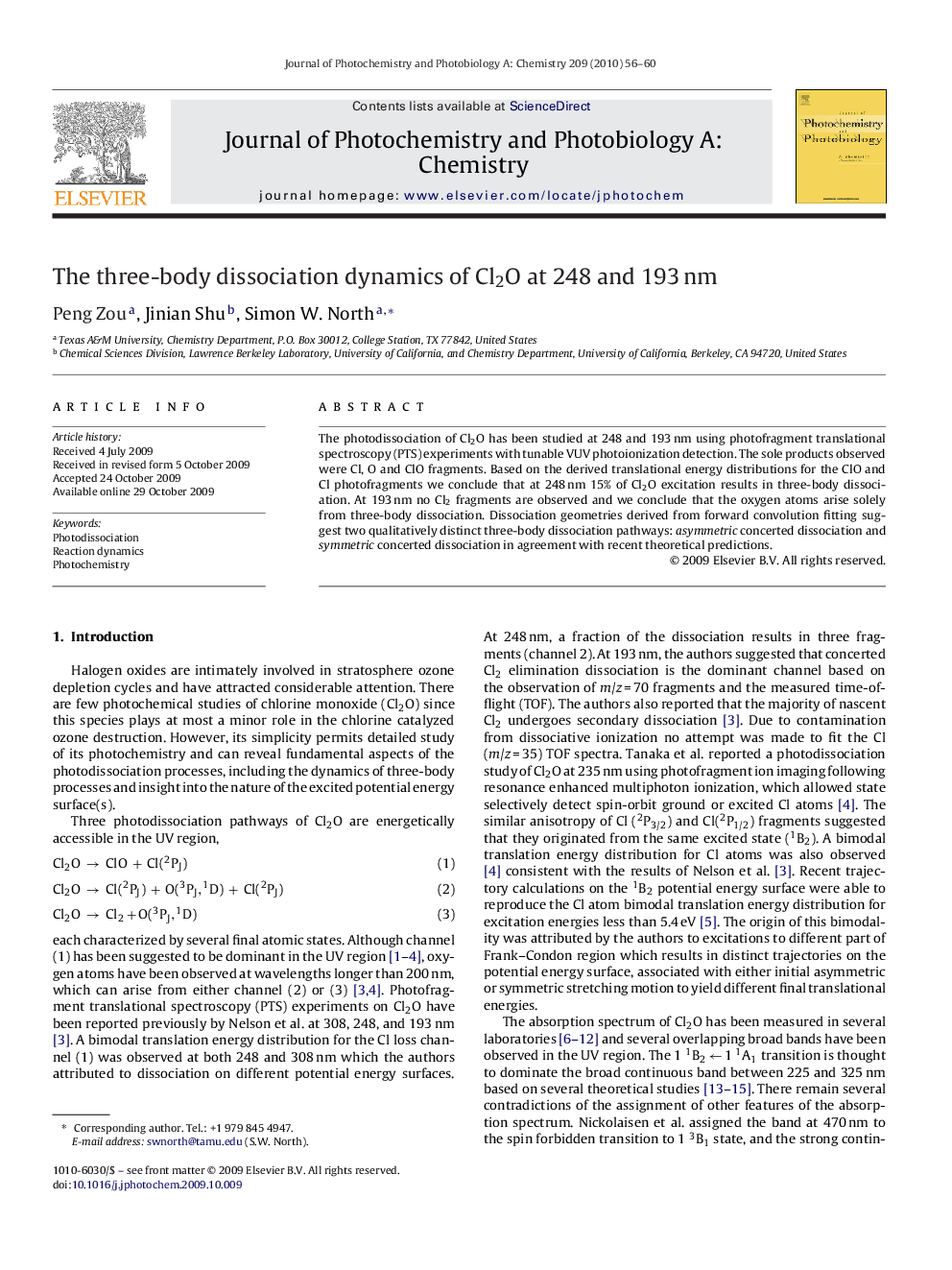| Article ID | Journal | Published Year | Pages | File Type |
|---|---|---|---|---|
| 27702 | Journal of Photochemistry and Photobiology A: Chemistry | 2010 | 5 Pages |
The photodissociation of Cl2O has been studied at 248 and 193 nm using photofragment translational spectroscopy (PTS) experiments with tunable VUV photoionization detection. The sole products observed were Cl, O and ClO fragments. Based on the derived translational energy distributions for the ClO and Cl photofragments we conclude that at 248 nm 15% of Cl2O excitation results in three-body dissociation. At 193 nm no Cl2 fragments are observed and we conclude that the oxygen atoms arise solely from three-body dissociation. Dissociation geometries derived from forward convolution fitting suggest two qualitatively distinct three-body dissociation pathways: asymmetric concerted dissociation and symmetric concerted dissociation in agreement with recent theoretical predictions.
